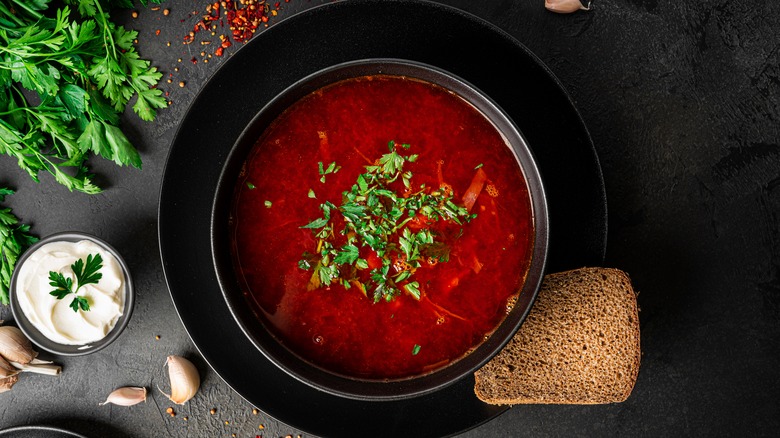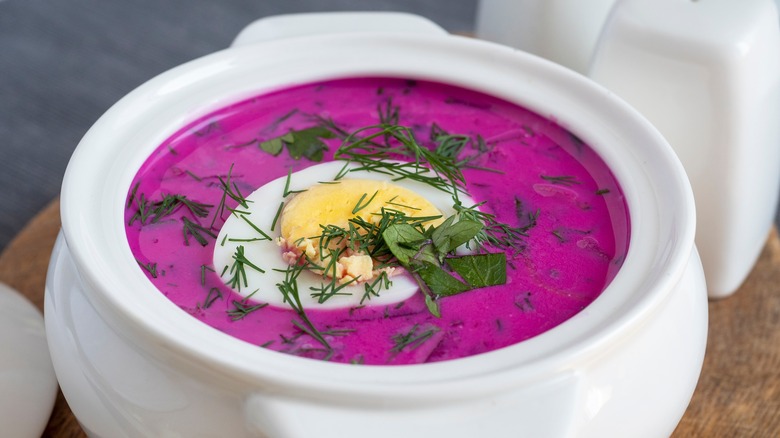Chłodnik Vs Borscht: What's The Difference?
In July of 2022, UNESCO included Ukrainian borscht on the List of Intangible Cultural Heritage. A culinary tradition threatened by the Russian invasion, the commonly consumed beetroot soup has many renditions throughout the country. Rather than accrediting the Eastern European nation with sole ownership, the act preserves the soup's deep-rooted heritage, per UNESCO.
In addition to Ukraine, which is often considered the soup's place of origin, borscht is widely consumed throughout Poland and Russia. The dish is malleable; sometimes cooked meatless with mushrooms and dumplings in Poland, or extra-hearty with beef in Russia and Ukraine, via Britannica. Beets are the staple, but even that component isn't mandatory — the name borscht is derived from hogweed, a marshy plant once foraged extensively throughout Ukraine and Poland. Borscht's tradition is not in following precise methodology but in pursuing an essence. Like an American chicken casserole, there are as many interpretations as there are kitchens. Although Soviets attempted to denationalize the dish, simplifying recipes in state cookbooks and serving soulless canteens versions, it never lost its Ukrainian affiliations, reports BBC. A borscht spin-off is still essentially borscht, but sometimes it goes by a different name — like this popular Polish version.
Chłodnik is a chilled variety of borscht popular in Poland
In Poland, chłodnik refers to a range of cold vegetable soups. The beet version, sometimes called chłodnik litewski, is the most common, so the names are used interchangeably. The bright pink dish is a medley of beets, cucumbers, and other vegetables blended with a dairy product, typically yogurt or sour cream, per Taste Atlas. Now interlinked with Polish cuisine, the dish has shared origins with neighboring Lithuania — its name directly translates to Lithuanian cold soup, notes Polonist.
A similar cold variation is referred to as svekolnik in Russia. Unlike the thicker chłodnik, the sour cream is not always blended into the soup but rather dolloped on top, reports the Jewish Food Society. As with other borscht variations, sometimes the cold version doesn't adopt a new name. Writing for the New York Times, Alex Witchel evokes memories of her past while preparing a rendition of the chilled soup — continually nostalgically referred to as borscht.
Recipes and names are often drawn along national lines, a discussion that's been recently amplified surrounding borsht, reports Washington Post. Delineating between the two dishes is untangling such relations. While chłodnik is dependably cold and typically from Poland, borscht may be any temperature and from a broader range of origins. The name may be malleable, but one characteristic is certain — each dish is dependably delicious.

